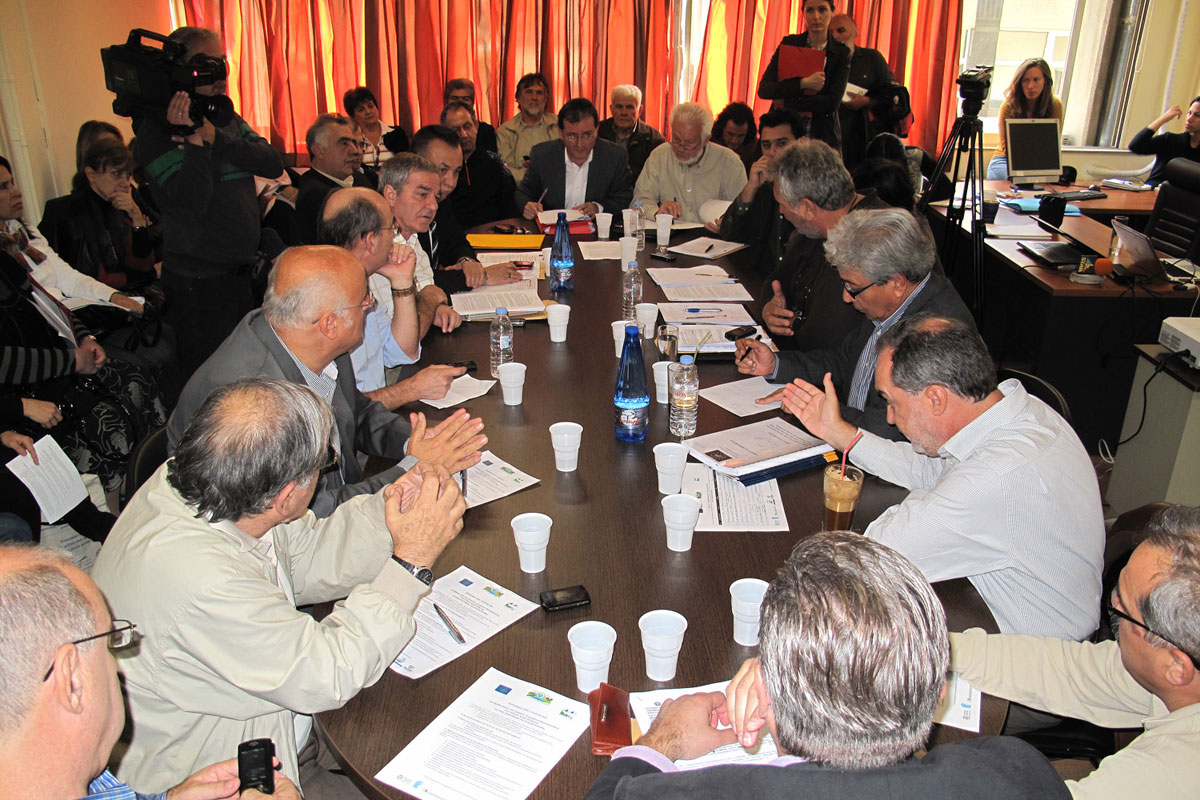Main menu
Conservation of priority forests and forest openings in "Ethnikos Drymos Oitis" and "Oros Kallidromo" of Sterea Ellada, LIFE11 NAT/GR/1014
Actions
Action F.2: Stakeholder Committee

This action concerns the establishment and function of a Stakeholder Committee (STAC), which will support the project management by providing guidance, in order to ensure public support and commitment and in order to overcome potential administrative and political problems.
The function of the STAC is considered a key element for the success of the project. The STAC will be chaired by the Project Manager. The members of the STAC will be representatives of local and regional authorities and of the local communities, representatives of local NGOs, and representatives of local professional unions. A full list of the members of the STAC will be presented in the inception report, and a draft list is presented below:
- Project Coordinator (HSPN).
- Team coordinator (or official representative) of the RST.
- President and other representatives of the Management Body of the National Park of Mt. Oiti.
- Representative(s) of the Municipality of Lamia.
- Representative(s) of the Municipality of Molos-Agios Konstantinos.
- Representative(s) of the Local Communities of the villages in the areas of Mt. Oiti and Mt. Kallidromo.
- Representative(s) of the Decentralized Region of Thessalia-Sterea Ellada.
- Representative(s) of the Forest Inspection of Lamia.
- Representative(s) of the Chamber of Fthiotida (union of local professionals).
- Representative(s) of local NGOs.
- Representative(s) from the Ministry of Environment, Energy and Climate Change.
- Representative(s) from the General Secretariat of Forests and Natural Environment.
The STAC will be established by the Project Manager at the onset of the project and will meet officially once a year.
The Project Manager along with the team coordinator of the RST will be responsible for inviting to the official meetings the members of the project personnel or the representatives of users’ groups (such as hunter, mountaineer, cyclist, and four-wheel drive clubs) as needed.
In addition, the members of the STAC will communicate regularly via the Stakeholder network of the project website (action E.3). The STAC will be actively involved in preparatory actions regarding stakeholder consultation (action A.11) and governance structure (action A.12), as well as in the environmental awareness and education campaign (action E.1) and the establishment of the Education and Information Centres (action E.2).
The STAC will also be informed and consulted regarding the specifications for the implementation of all the concrete conservation actions and will be actively involved in the after-LIFE management plans (action F.4).
The Stakeholder Committee is expected to ensure two pre-requisites for the success of any conservation effort:
- The consent of the local, regional and national authorities for the project actions
- The consent and participation of the local communities in conservation actions.
It will function as a consultation body for the project, as a link of the project to the local people, and as a forum for the exchange of information and opinions.
- The STAC will facilitate the project flow and enable the long-term sustainability of the results of the project.
- Five formal meetings of the STAC (minutes will be included in the deliverable products).













